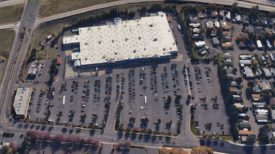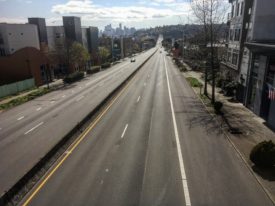Last week the Seattle Post-Intelligencer ran an excellent series on an often-overlooked failing of our economy: the plight of the working poor. In King and Snohomish Counties (home to Seattle, Bellevue, and Everett), one in five people lives in a household that earns less than twice the federal poverty level. And nearly two-thirds of those households have at least one full-time wage earner.
In a region that honors hard work, it doesn’t seem right that full-time workers are still living on such meager amounts.
Washington’s poverty rate has been steadily marching upward for the last several years. But the federal poverty line is a bad measure because it’s far too low. In the Seattle area, even twice the federal poverty level is often barely enough to scrape by. Worse, many low-wage earners often have tenuous job security and few benefits, compounding the danger of their precarious finances.
These days, being poor in Washington is especially burdensome. To cite just a few examples from the P-I‘s series:
- Washington’s tax system is highly regressive: "According to the Institute on Taxation and Economic Policy… Washington families living at the federal poverty level pay 17 percent of their incomes in state and local taxes, whereas the highest-income families pay 3 percent."
- The Puget Sound region is expensive: "Seattle-area grocery prices rose 42 percent over the past 12 years, compared with the national average of 36 percent. And in the 1990s, the cost of child care at day care centers in King County jumped 31 percent."
- And housing is especially expensive: "The average cost of a residential house in King County jumped 116 percent over the past 12 years, from $181,128 to $390,974. In the Seattle-Bellevue-Everett area, the fair-market rent today for a two-bedroom apartment averages $923 a month, an 81 percent increase since 1990."
- Getting an advanced degree is tougher than ever: "The state’s universities are so crowded that, to name just one example, the University of Washington stopped accepting applications this quarter from community college students hoping to transfer there to finish their bachelor’s degrees."
Add to that mix rising health care costs, persistently high rates of unemployment, diminished federal subsidies for low-income child care and other benefits, and vanishing jobs in the manufacturing sector (traditionally a province of decent-paying non-professional jobs). The upshot is an economy that is increasingly harsh to low-income workers: there are fewer avenues for advancement into middle-class stability.
None of this would be quite so alarming if our economy offered shared prosperity during the good times. But recent research (large pdf) from the Economic Policy Institute shows income gains are widely disproportionate. The highest-earning fifth of Washington households amass income gains far more rapidly than either the lowest fifth or the middle fifth. From the late 1970s to the late 1990s, for every dollar the middle class earned, the top fifth brought in an extra $4.58. And for very extra dollar that the bottom fifth earned, the top fifth netted an additional $15.64.
The big question, of course, is what to do? How do we increase meaningful economic opportunity for those near the bottom of the income ladder? And how do we create conditions in which families, especially working families, can avoid poverty? Some fixes—such as changing the state’s tax code to mirror Oregon’s progressive structure—are easy to identify, but beyond the pale of current politics. Other fixes—such as greater federal benefits and resources for low-wage workers—are unlikely during our current budget era (if anything, benefits are likely to be slashed), and largely outside the province of the state’s policymakers, in any case.
So what can we do? I’m curious to learn from readers: What should be the Northwest’s top strategies for reducing poverty, especially poverty among full-time workers? What are the hidden levers in our economic system that can improve opportunity and soften financial catastrophes? And where can we look for solutions that can be replicated here?








